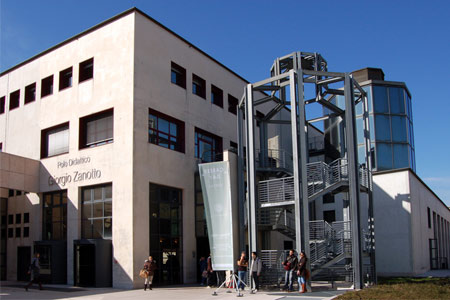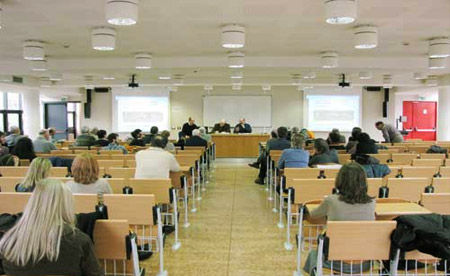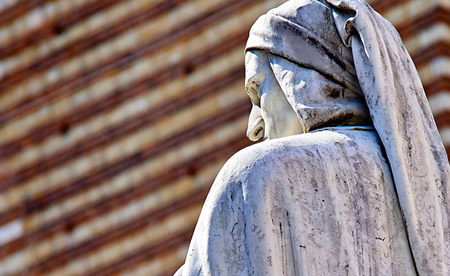Learning outcomes
1. Indo-European Debate and Germanic Languages
The course aims at presenting a detailed account and a comparative linguistic survey of the Germanic languages, of their grammatical units, rule systems and construction (word formation, sound systems, vowel length, syllable structure, the noun phrase, the verb phrase, tense and mood, and the syntax of the clause), considering dialects alongside standard varieties and above all the extinct Gothic language.
Literature
- Harbert, Wayne. 2007. The Germanic languages. Cambridge: CUP.
- Walkden, George. 2014. Syntactic reconstruction and proto-germanic. Corby: Oxford University Press
2. Gothica Bononiensia: Linguistic and Text-Critical Consequences of a Rediscovery
The course aims at presenting a recent rediscovery (two handwritten palinsest folios named Gothica Bononiensia, since they were found in the Basilica of San Petronio in Bologna). These fragments belong to parts of the Scriptures that were not yet known, given that they are not witnessed in other manuscripts (the most ample and relevant of whom is the so-called Codex Argenteus, today in Uppsala, Sweden). They served presumably as a repertory of scriptural loci to use in sermons: Their main topic is the power of God through some biblical exempla of salvation. The manuscript may be dated in the first half of the sixth century, judging by known Gothic manuscripts, while codicological divergences between this fragment and other Gothic witnesses certainly produced in Ravenna alternatively suggest a different place of its production, may be Verona, an important centre of Gothic power: the cursive-like script of the palimpsest (other than the elegant and regular librarian majuscule of the Codex Argenteus), confirms the hypothesis of ‘schools’ of Gothic Biblical exegesis and the relative production of not-luxury handbooks for common usage and teaching.
- Finazzi, Rosa Bianca and Paola Tornaghi, ‘Gothica Bononiensia. Analisi linguistica e filologia di un nuovo documento’, Aevum 87, 2013, pp. 113-55 (English translation by Irmengard Rauch in Interdisciplinary Journal for Germanic and Semiotic Analysis 19, 2, 2014, pp. 1-56)
- Carla Falluomini, ‘Zum gotischen Fragment aus Bologna’, ZfdA 143 (2014), pp. 281-305.
Selected Literature
1. Indo-European Debate and Germanic Languages
- Harbert, Wayne. 2007. The Germanic languages. Cambridge: CUP.
- Walkden, George. 2014. Syntactic reconstruction and proto-germanic. Corby: Oxford University Press
2. Gothica Bononiensia: Linguistic and Text-Critical Consequences of a Rediscovery
- Finazzi, Rosa Bianca and Paola Tornaghi, ‘Gothica Bononiensia. Analisi linguistica e filologia di un nuovo documento’, Aevum 87, 2013, pp. 113-55 (English translation by Irmengard Rauch in Interdisciplinary Journal for Germanic and Semiotic Analysis 19, 2, 2014, pp. 1-56)
- Carla Falluomini, ‘Zum gotischen Fragment aus Bologna’, ZfdA 143 (2014), pp. 281-305.







